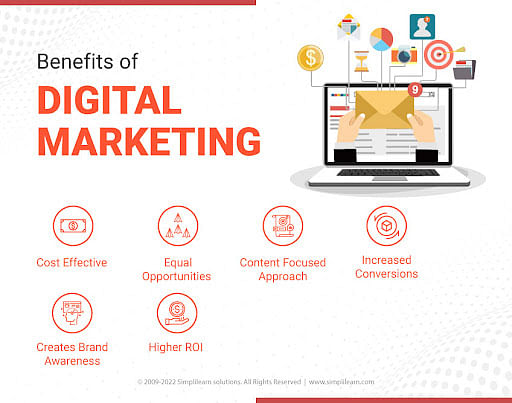Enhance User Experience and Drive Traffic With Receptive Website Design
In today's digital landscape, where users are accessing sites from a wide range of gadgets, responsive web design has actually come to be much more essential than ever before. With its capability to adjust and perfectly adjust to various display dimensions, receptive design not just improves customer experience yet likewise drives traffic to your internet site.
Why Responsive Web Layout Matters
Receptive website design is a vital facet of contemporary internet development due to its capacity to make sure optimal individual experience across numerous devices and display dimensions. With the spreading of smart devices, tablets, and various other mobile phones, it has actually come to be essential for websites to adjust and offer smooth capability despite the gadget being used.
The main reason that responsive web layout matters is that it allows individuals to have a consistent and enjoyable browsing experience, despite the tool they are utilizing. A receptive web site automatically changes its layout, web content, and design components to fit the screen dimension and resolution of the gadget, guaranteeing that individuals can easily navigate and connect with the internet site without any type of trouble or irritation.
Additionally, responsive website design additionally plays a substantial role in search engine optimization (SEARCH ENGINE OPTIMIZATION) Internet search engine, such as Google, prioritize web sites that are responsive and mobile-friendly in their search engine result. By incorporating receptive design principles, sites can improve their presence and position, causing boosted organic traffic and possible customers.

Boosting User Interaction Through Responsive Layout
Optimizing individual interaction is a vital goal of responsive style, as it makes sure that individuals can easily gain access to and connect with site web content on any kind of gadget. With the boosting use of mobile phones and tablets, it is essential for sites to adjust to various display dimensions and resolutions. Receptive design enables websites to automatically change their layout and material to give a smooth user experience across devices.
One of the main ways responsive layout boosts customer interaction is by decreasing tons times. With a responsive web site, users don't need to await different mobile versions to lots, leading to faster accessibility to web content. This improved rate brings about greater customer satisfaction and encourages them to invest even more time on the site.
Additionally, receptive style enhances individual involvement by boosting navigation and customer interface (The Ad Firm seo). When an internet site is made responsively, buttons and food selections are enhanced for touch communications, making it simpler for individuals to browse and interact with the website on their mobile phones. This intuitive and straightforward experience keeps users involved and motivates them to discover even more of the website
Moreover, receptive design allows for far better web content visibility and readability. By adjusting the format and font style dimensions to different devices, receptive web sites guarantee that users can easily recognize the content and review. This improves individual engagement by reducing the need for scrolling or zooming to check out the message.
Enhancing Website Website Traffic With Responsive Internet Layout
With the growing popularity of smart phones, having a web site that is responsive to various display sizes and resolutions is necessary for driving enhanced website traffic. In today's digital landscape, users are accessing internet sites from a selection of devices such as mobile phones, tablets, and computer. Each of these gadgets has various display dimensions and resolutions, and if your web site is not made to adjust to these variants, it can bring about a bad individual experience and a loss of potential website traffic.
Receptive web layout makes certain that your web site looks and operates efficiently across all devices. By using flexible grids, fluid pictures, and media queries, responsive layout enables your web site to automatically adjust its design, material, and navigation to fit any kind of screen size. This indicates that customers will have a smooth surfing experience regardless of whether they are utilizing a large desktop or a tiny smartphone computer system.
Secret Aspects of Reliable Receptive Design
Effective receptive design incorporates several crucial components that make certain a smooth customer experience across different tools. This permits web content to be presented in a legible and aesthetically enticing manner on any type of device.
An additional essential component is media inquiries. These enable designers to apply various styles and layouts based on the features of the user's gadget, such as screen dimension and positioning. By utilizing media queries, designers can maximize the discussion of web content for every device, guaranteeing that it is quickly obtainable and readable.
Receptive images are likewise essential in effective receptive design. Pictures that are as well huge can decrease web page lots times on mobile phones, while photos that are also small may show up pixelated on larger screens. By utilizing methods Web Site such as receptive photo resizing and careless loading, developers can guarantee that images are properly sized and enhanced for every gadget.
Last but not least, reliable receptive layout involves a mobile-first approach. This indicates designing and focusing on content for mobile tools initially, and after that expanding and boosting the design for larger displays. web design i This approach ensures that one of the most essential content is quickly available on smaller sized screens, while still providing a rich experience on bigger gadgets.
Best Practices for Implementing Responsive Website Design
Carrying out receptive website design calls for cautious factor to consider of numerous finest practices to make certain an optimum individual experience across different devices. Below are some crucial finest techniques to adhere to when applying responsive website design.
Firstly, it is essential to prioritize mobile customers. With the enhancing dominance of mobile gadgets, creating for mobile-first has become necessary. Start deliberately for smaller displays and after that considerably improve the format for bigger screens.

An additional crucial finest method is to optimize photos for various screen resolutions. Big images can reduce the loading time of your site, particularly on mobile devices with slower links. Usage receptive images that can be resized based on the device's screen resolution to enhance performance.
In addition, test your site on various tools and screen sizes to guarantee a constant and smooth experience. There are numerous testing tools available that can aid you recognize any concerns and make essential adjustments.
Lastly, prioritize use and access. Guarantee that your web use this link site is very easy to navigate, with succinct and clear web content. See to it that your web site comes to people with impairments and complies with ease of access guidelines.
Conclusion
Finally, receptive website design plays an essential function in boosting individual experience and driving website traffic to websites. By taking on receptive style concepts, websites can make sure optimal checking out experiences throughout various gadgets, resulting in boosted individual interaction (The Ad Firm). Moreover, receptive style can additionally add to higher internet site traffic as it boosts online search engine rankings and promotes easy sharing of content. As a result, businesses should concentrate on applying the vital elements and ideal methods of receptive style to properly fulfill the demands of modern-day individuals.
Optimizing user interaction is an essential objective of responsive design, as it makes certain that individuals can easily gain access to and communicate with site web content on any device. Receptive layout enables websites to automatically change their layout and material to give a smooth individual experience across tools.
Additionally, responsive style enhances customer interaction by enhancing navigating and user interface.Receptive images are also essential in effective responsive design. By taking on receptive style concepts, sites can make sure ideal watching experiences throughout various tools, leading to raised customer interaction.